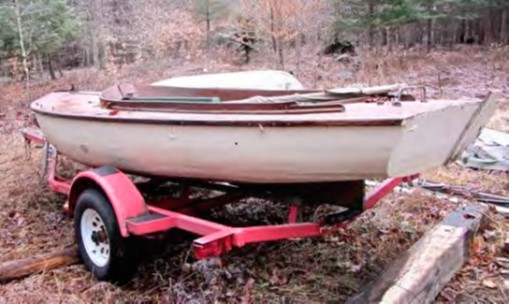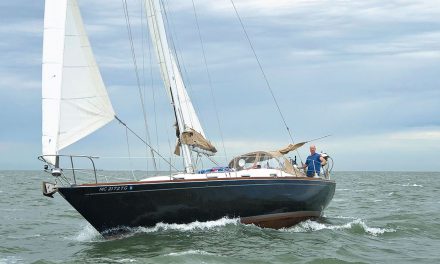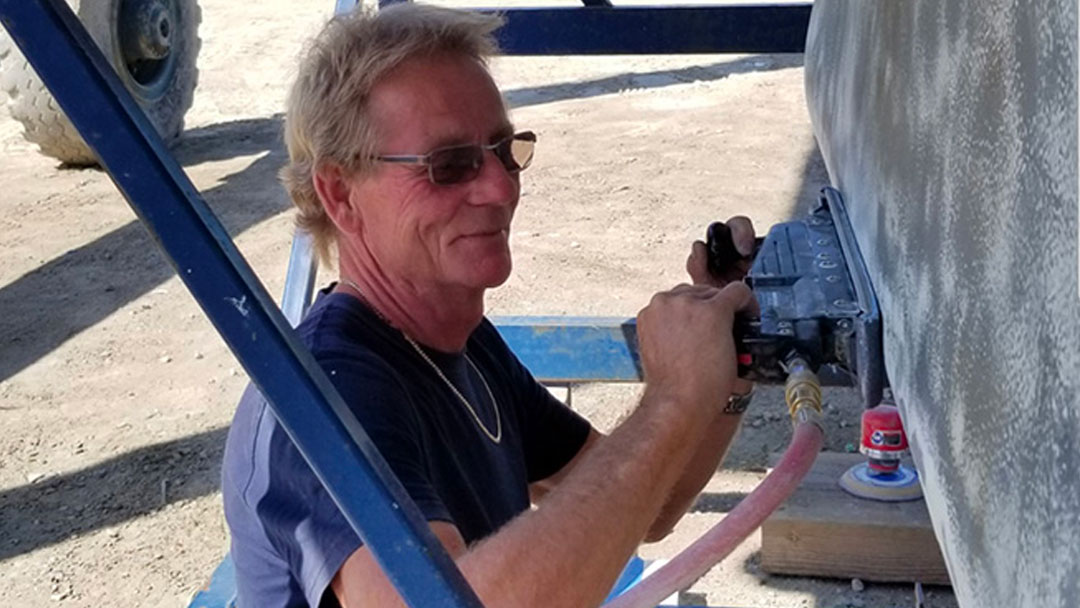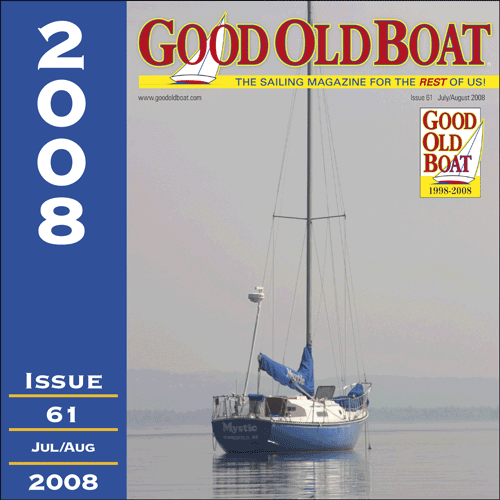Issue 140: Sept/Oct 2021
In 2011, a sophomore at State University of New York’s Maritime College in the Bronx jumped into his car and drove 300 miles north to the Adirondacks to join a landscaping crew charged with sprucing up the grounds of The Knollwood Club. The club maybe held a secret, and getting past the locked gate by conventional means to investigate that secret had already failed.
The Knollwood Club was created in the late 19th century on the banks of Lower Saranac Lake to serve as vacation haven for Jewish people, then “restricted” from many hotels and country clubs. In the late 1930s and into the 1940s, The Knollwood Club was a summer retreat of Princeton Professor Albert Einstein—cabin number 6.
Now with the access he needed, the student peeked into the windows of the shed behind cabin 6—empty. He explored the wooded area nearby, he searched under the porch. Nothing. He was looking for Tinef—or possibly the remains of Tinef—Einstein’s boat for many years.
The sleuthing was part of a semester-long school project to research the provenance of an artifact and deliver a publishable paper on the findings. The prospect of learning more about this artifact had just dimmed, and the student returned to Maritime College empty-handed.
But the story wasn’t over. On the final day of classes in the fall of 2014, another student who was working on the “Einstein boat” project received a cryptic message from Rob Furnette, a boatbuilder and river guide with a shop in Tupper Lake, New York.
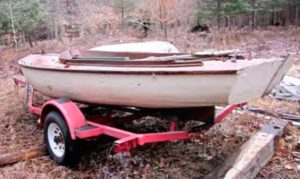
Einstein’s boat? Credit: Rob Furnette.
“I have the boat you are looking for. Here is a photo.” The photo showed a boat on a trailer, parked in the weeds alongside a dirt road.
Could it be?
Earlier that year, Furnette had been contacted by an old friend who told him, “I have Albert Einstein’s old sailboat. I bought it from a long-time tenant at Knollwood. It was old when I acquired it, and if you don’t come get it in two weeks, well… let’s just say I’m going to turn it into kindling. My chainsaw should be back from the shop by then.” Furnette says he quickly bought a trailer and went and picked up the boat.
Though Furnette was helpful and cooperative with the student researchers, they were unable to conclude anything definitive about the boat’s provenance. The design is common, but particular elements, like the bollard and the coaming shape and rake, don’t match known photos of Tinef.
Could Furnette’s boat be a boat Einstein sailed on Lower Saranac Lake? Sure, but nothing confirms that, or that it’s a boat he owned. Other than the number 3 on a moldering sail, there were no markings anywhere on the hull.
More recently, students have uncovered evidence that Tinef was on Princeton’s Lake Carnegie in the late 1950s, right around the time of Einstein’s death, and acquired by the captain of Princeton’s sailing team. After he graduated, he moved to the Seattle area and took little Tinef with him.
And so, the sleuthing continues. This fall semester, a new group of Maritime College students will begin tracking down that part of the story.
Professor David Allen has been teaching at SUNY Maritime College for almost 20 years. In that time, his students have tracked the whereabouts of several notable small craft, including lifeboats from the Andrea Doria. In addition to the Einstein boat, students are still trying to find “the Woodstock boat,” an aluminum skiff visible in 1969 photos floating in a small lake a few hundred yards east of the stage. And, a few students are on the trail of the 14-foot ship’s boat from the HMS Resolute (of the Presidential Desk).
Thank you to Sailrite Enterprises, Inc., for providing free access to back issues of Good Old Boat through intellectual property rights. Sailrite.com

